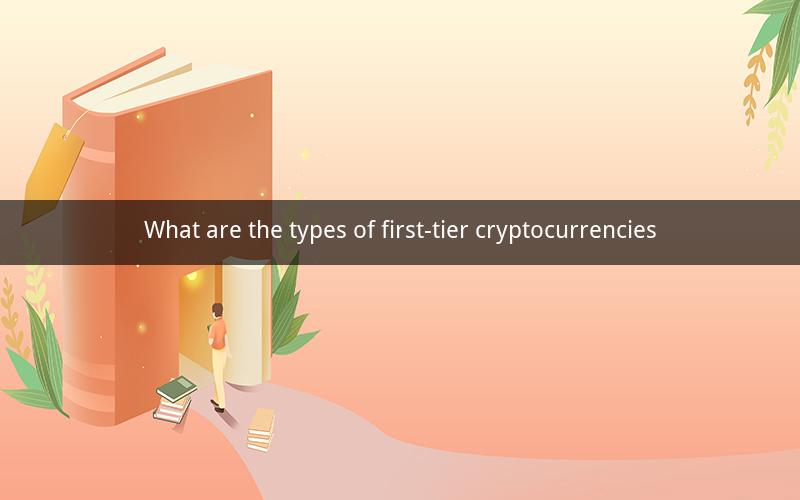
Table of Contents
1. Overview of First-Tier Cryptocurrencies
2. Bitcoin
3. Ethereum
4. Binance Coin
5. Cardano
6. XRP
7. Litecoin
8. Polkadot
9. Chainlink
10. Uniswap
11. Tezos
12. Conclusion
1. Overview of First-Tier Cryptocurrencies
First-tier cryptocurrencies refer to the most prominent and widely recognized digital assets in the cryptocurrency market. These cryptocurrencies have gained significant traction, both in terms of market capitalization and adoption rates. In this article, we will explore the types of first-tier cryptocurrencies and their unique characteristics.
2. Bitcoin
Bitcoin, launched in 2009, is often considered the pioneer of cryptocurrencies. It operates on a decentralized network known as the blockchain and has no central authority. Bitcoin has a fixed supply of 21 million coins, making it a deflationary asset. Its primary purpose is to serve as a digital gold, providing a secure and transparent medium of exchange.
3. Ethereum
Ethereum, launched in 2015, is a blockchain platform that enables the creation of decentralized applications (DApps) and smart contracts. It introduced the concept of smart contracts, allowing developers to build innovative applications without the need for intermediaries. Ethereum's native cryptocurrency, Ether (ETH), is used for transaction fees and as a digital currency.
4. Binance Coin
Binance Coin (BNB) was launched in 2017 by the popular cryptocurrency exchange Binance. Initially, it was used as a payment method for transaction fees on the Binance platform. However, its utility has expanded beyond that. BNB is now used for various purposes, including paying for fees on Binance DEX, participating in governance, and purchasing goods and services on the Binance ecosystem.
5. Cardano
Cardano, launched in 2017, is a blockchain platform that aims to offer a more sustainable and secure alternative to existing cryptocurrencies. It utilizes a unique proof-of-stake algorithm called Ouroboros. Cardano's native cryptocurrency, Ada (ADA), is designed to be a decentralized digital currency that can be used for everyday transactions.
6. XRP
XRP, launched in 2012, is a digital asset developed by Ripple Labs. It is primarily used for cross-border payments, aiming to offer a faster and cheaper alternative to traditional banking systems. XRP's native token, also called XRP, is designed to facilitate these transactions efficiently.
7. Litecoin
Litecoin, launched in 2011, is often referred to as "silver" to Bitcoin's "gold." It operates on a similar blockchain technology but with some differences, such as a faster block generation time and a higher maximum supply. Litecoin's native cryptocurrency, Litecoin (LTC), is used for peer-to-peer transactions.
8. Polkadot
Polkadot, launched in 2020, is a blockchain platform that aims to connect multiple blockchains into a single network. Its unique architecture allows for seamless interoperability and cross-chain communication. Polkadot's native cryptocurrency, DOT, is used for governance, staking, and paying transaction fees.
9. Chainlink
Chainlink, launched in 2019, is a decentralized oracle network that connects smart contracts with real-world data. It allows developers to build decentralized applications that can interact with external data sources. Chainlink's native cryptocurrency, LINK, is used for paying oracles and facilitating transactions on the network.
10. Uniswap
Uniswap, launched in 2018, is a decentralized exchange (DEX) built on the Ethereum blockchain. It enables users to trade cryptocurrencies without the need for a centralized exchange. Uniswap utilizes a liquidity pool mechanism, where users can provide liquidity and earn fees in return. Its native cryptocurrency, UNI, is used for governance and token rewards.
11. Tezos
Tezos, launched in 2018, is a blockchain platform designed to evolve and upgrade itself over time. It aims to offer a more efficient and cost-effective solution for developing decentralized applications. Tezos's native cryptocurrency, Tezos (XTZ), is used for governance, fees, and as a medium of exchange.
12. Conclusion
First-tier cryptocurrencies play a crucial role in the cryptocurrency ecosystem. They have gained widespread recognition and adoption due to their unique features and utility. Understanding the different types of first-tier cryptocurrencies can help individuals make informed decisions about their investments and use cases.
Questions and Answers
1. What is the main purpose of Bitcoin?
Bitcoin's primary purpose is to serve as a digital gold, providing a secure and transparent medium of exchange.
2. How does Ethereum differ from Bitcoin?
Ethereum is a blockchain platform that enables the creation of decentralized applications (DApps) and smart contracts, while Bitcoin focuses on serving as a digital currency.
3. What is the role of Binance Coin (BNB) on the Binance platform?
BNB is used to pay transaction fees on the Binance platform, participate in governance, and purchase goods and services within the Binance ecosystem.
4. What is the difference between Cardano and Ethereum?
Cardano aims to offer a more sustainable and secure alternative to existing cryptocurrencies, while Ethereum is a blockchain platform that enables the creation of decentralized applications and smart contracts.
5. What is the primary use case of XRP?
XRP is primarily used for cross-border payments, aiming to offer a faster and cheaper alternative to traditional banking systems.
6. How does Litecoin differ from Bitcoin?
Litecoin has a faster block generation time and a higher maximum supply compared to Bitcoin, making it a "silver" to Bitcoin's "gold."
7. What is the main objective of Polkadot?
Polkadot aims to connect multiple blockchains into a single network, enabling seamless interoperability and cross-chain communication.
8. What is the role of Chainlink in decentralized applications?
Chainlink connects smart contracts with real-world data, allowing developers to build decentralized applications that can interact with external data sources.
9. How does Uniswap facilitate cryptocurrency trading?
Uniswap utilizes a liquidity pool mechanism, where users can provide liquidity and earn fees in return, enabling decentralized trading without a centralized exchange.
10. What is the main objective of Tezos?
Tezos aims to evolve and upgrade itself over time, providing a more efficient and cost-effective solution for developing decentralized applications.